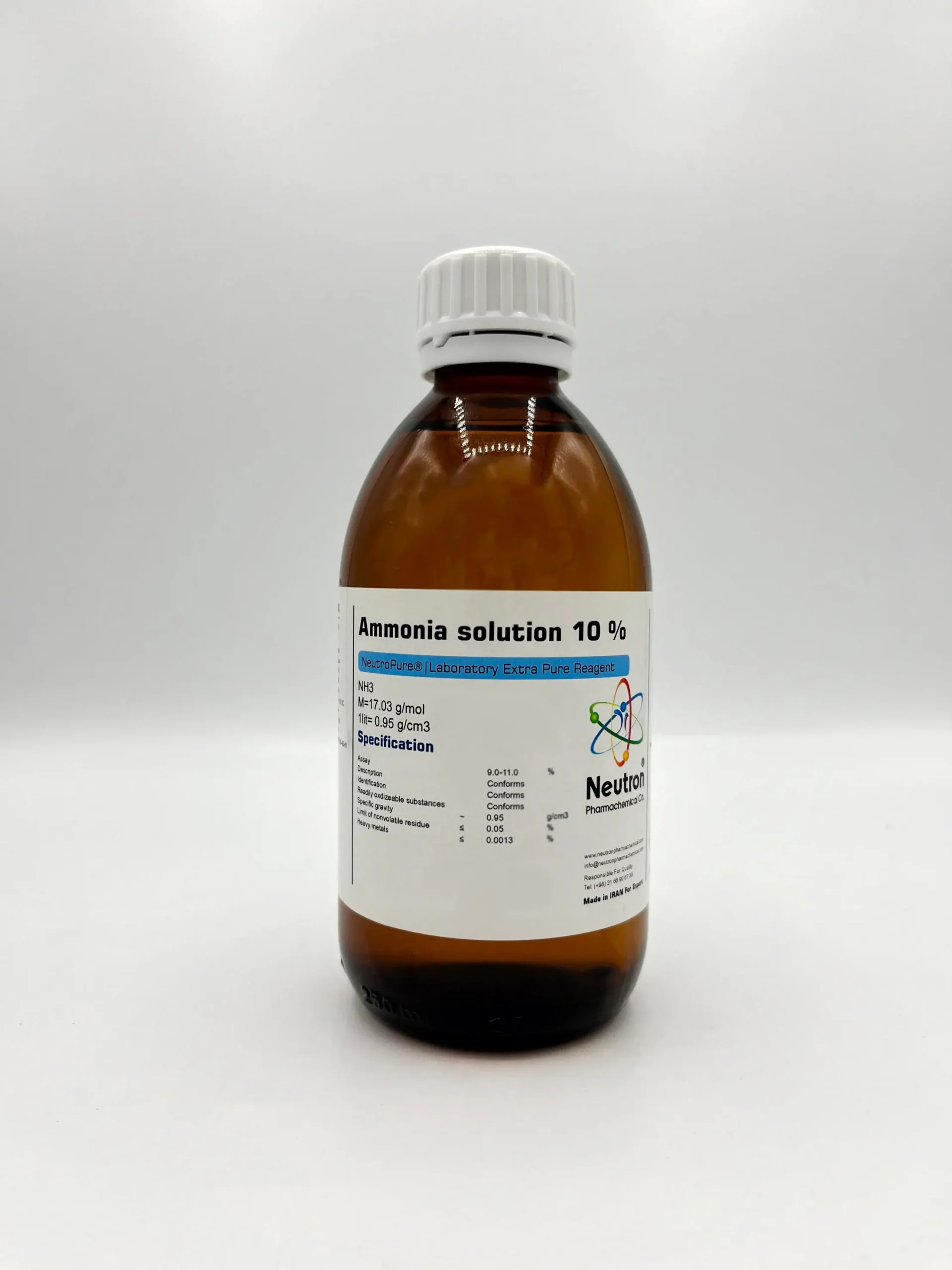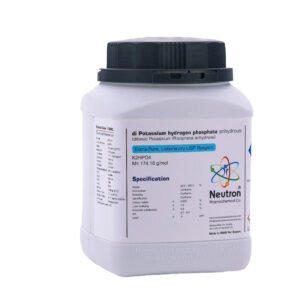Ammonia 10%
| Formula | NH3 |
| Density | 0.95 g/cm3 |
| Molar mass | 17.03 g/mol |
| CAS number | 1336-21-6 |
| HS code | 28142000 |
| EC number | 215-647-6 |
| Storage (temprature) | +2 OC to +25 OC |
| SDS | Available |
| RTECS | BQ9625000 |
| R phrase | R 34 – 50 |
| S phrase | S 26-36/37/39-45-61 |
| Assay | 9.0-11.0 | % | |
| Description | Conforms | ||
| Identification | Conforms | ||
| Readily oxdizeable substances | Conforms | ||
| Specific gravity | ~ | 0.95 | g/cm3 |
| Limit of nonvolatile residue | ≤ | 0.05 | % |
| Heavy metals | ≤ | 0.0013 | % |
Ammonia 10%, also referred to as 10% ammonium hydroxide solution, is an aqueous solution of ammonia gas (NH₃) in water. It is a colorless liquid with a strong, pungent odor and is commonly used as a cleaning agent and in various chemical applications.
🏭⚗️ Production
Ammonia solutions are produced by dissolving anhydrous ammonia gas in water. The concentration of commercial household ammonia typically ranges from 5% to 10% by weight. For industrial purposes, higher concentrations may be used.
🔬 Properties
A 10% ammonia solution is a clear, colorless liquid with a sharp, irritating smell. It is alkaline, with a pH typically around 11–12, depending on the exact concentration. It is corrosive to certain metals and irritating to the skin, eyes, and respiratory tract. The solution releases ammonia gas when exposed to air and should be handled with proper ventilation.
🧪 Applications
• Cleaning agent: Used in household and industrial cleaners for removing grease, stains, and grime.
• Laboratory use: Acts as a reagent for pH adjustment and as a complexing agent in qualitative analysis.
• Textile industry: Used in treating cotton and wool to improve properties like dye uptake.
• Water treatment: Sometimes used to adjust pH or remove chloramines.
• Fertilizer preparation: Occasionally involved in small-scale or lab production of ammonium-based fertilizers.





